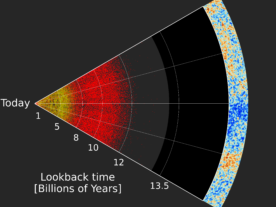Cardiovascular Disease #1 Cause of World’s Deaths
A new 25 year global study suggests cardiovascular diseases is now the cause of one third of all deaths throughout the world.
The study reports that in 2015 nearly 18 million people worldwide died from this family of illnesses, which includes heart attack, congestive heart failure, coronary artery disease as well as stroke.
More than 400 million individuals globally are living with a cardiovascular disease.
The report lists people living in Eastern Europe, Central Asia, the Middle East, South America, sub-Saharan Africa, and Oceania have the greatest number of cardiovascular deaths.
The study also indicated the 20 year decline in CVD deaths in countries such as the United States, Australia, Japan and those in Western Europe have begun to ease off and plateau.

(Photo: photos.com)
Getting More Sleep Could Help Ease Pain
If you’re in pain and need some relief, researchers at Beth Israel Deaconess Medical Center and Boston Children’s Hospital propose that instead of reaching for a pain pill you just may need more sleep.
Based on experiments with mice, they say that enhanced alertness can mean less sensitivity to pain.
The researchers, who detailed their findings in the Journal Nature Medicine, also suggest that in the absence of adequate sleep, improved alertness through caffeine use, for example, could also help make you feel better.
In their experiments on mice, the scientists gauged the effects of sleep loss on how sensitive the animals were to both painful and non-painful stimulation.
After testing usual pain blockers like ibuprofen, and then stimulant agents like caffeine, the researchers say they were able to find how alertness played a role in lowering the sensitivity of the mice to pain.

NASA celebrated the 15th Anniversary of its Chandra X-ray Observatory on July 23, 2014 by releasing some newly processed images of objects out in the cosmos. Here is G292.0+1.8 the remnants of supernova, which is a star that exploded. (NASA)
Distance Supernova Can Doom Earth Has Doubled
In 2016, scientists released a pair of studies that provided evidence that the Earth and the moon were showered with bits of star material long ago from a nearby supernova, or several supernovas, about 2 and a half million years ago.
The researchers placed the exploding star or stars at a distance of about 300 light years away from us.
Now, a new study, proposes the stars actually exploded about half that distance or 150 light years away.
Study authors say while a star exploding from such a distance today could cause some effects to Earth, it wouldn’t cause the kind of serious damage that could, for example, touch off mass extinctions.
The distance a supernova could spell disaster to our planet’s living creatures is estimated to be about 25 light years from Earth.
However, the new study also suggests that an exploding star at twice that distance, between 40 and 50 light years away, could also spell doom.

Researchers conducted a series of experiments intended to gauge age perception based on facial expressions. Forty student participants were shown images of people smiling, with neutral expressions and surprised looks. (Ben-Gurion University of the Negev)
Want to Look Younger? Don’t Smile
If you want to look younger, a new study’s advice is – don’t smile.
While common knowledge suggests smiling exudes a more youthful appearance, research conducted by Ben-Gurion University and Western University in Canada provides scientific evidence that the opposite is true.
A study outlining the findings show that people flashing a big smile are thought by others to be older than people who don’t smile or even look surprised.
The researchers gathered 40 university students and showed them images of people’s faces with smiling, non-smiling and surprised expressions.
They were asked to rank them from youngest to oldest looking.
The students rated smiling faces as the oldest, followed by images of non-smiling faces. Faces with surprised expressions were ranked as the youngest.
The study suggests that smiling forms wrinkle lines around the eyes, making the person look older. On the other hand someone making a surprised face pulls facial skin backward, eliminating the wrinkles.

On March 8, 2015, Jupiter’s moon Europa passed in front of Io, allowing detailed mapping of the bright volcanic crater called Loki Patera (Katherine de Kleer)
Astronomers Spot Waves of Lava on Jupiter Moon Io
Astronomers used a rare lunar alignment to see waves of lava flowing within the largest and most active volcanic sites on Jupiter’s moon, Io, which also happens to be the most volcanically active body in the entire solar system.
On March 8, 2015, ice-covered Europa, another of the giant planet’s moons, passed directly in front of Io, blocking out its light.
This allowed the astronomers to accurately observe heat produced by Io’s volcanoes within infrared wavelengths.
Observational data showed a steady increase of surface temperatures on the huge lake of molten lava that gathers within the crater.
The researchers say this suggests the lava had overturned within the lake in two waves, traveling west to east at about a kilometer per day.
One of the more popular explanations for this area on Io to brighten and dim is caused by overturning lava.

“Neo” skull of Homo naledi from the Lesedi Chamber of the Rising Star cave system in South Africa. The skull has been painstakingly reconstructed, providing a much more complete portrait of the early hominin. (John Hawks CC-BY)
Scientists Find More Remains of Human Ancestor
A team of anthropologists, exploring a cave system in South Africa, has found more fossilized remains of a closely related modern human ancestor.
The scientists say that it’s possible the new hominin species may have even lived along with the earliest modern humans and probably other hominin species over 200,000 years ago.
This newfound relative species is called Homo naledi.
Anthropologist and research team leader John Hawks, from the University of Wisconsin-Madison, says that the discovery included the remains of three juvenile and adults that includes a complete skull.
Finding the gathering of remains leads Hawks to think that the Homo naledi used dark, remote places to store its dead. This behavior is something he says suggests great intelligence and possibly the first stirrings of culture.

This animation with two different views of hot gas in the Perseus galaxy cluster. The first is Chandra’s best view of hot gas in the central region of the Perseus cluster and the larger image incorporates additional data over a wider field of view. (NASA/CXC/SAO/E.Bulbul, et al. and NASA’s Goddard Space Flight Center/Stephen Walker et al)
Huge Gas Wave Discovered in Galaxy Cluster
Scientists recently discovered a huge wave of hot gas rolling through the Perseus Galaxy Cluster some 240 million light years away, in the constellation Perseus.
Using a combination of data gathered by NASA’s Chandra X-Ray Observatory and ground based radio telescope arrays along with computer simulations, the scientists have determined that this wave of hot gas spans some 200,000 light-years, which makes it about twice the size of our own Milky Way galaxy.
The researchers say the wave was set off when a smaller galaxy cluster with about a tenth the mass of the Perseus cluster happened to brush by it billions of years ago.
The team’s lead scientist, Stephen Walker of NASA’s Goddard Space Flight Center said that Perseus is one of the most massive of nearby galaxy clusters.
It is also the brightest cluster when observed at x-ray wavelengths, so data from Chandra was able to provide the scientists with unparalleled detail.

























Comments are closed.